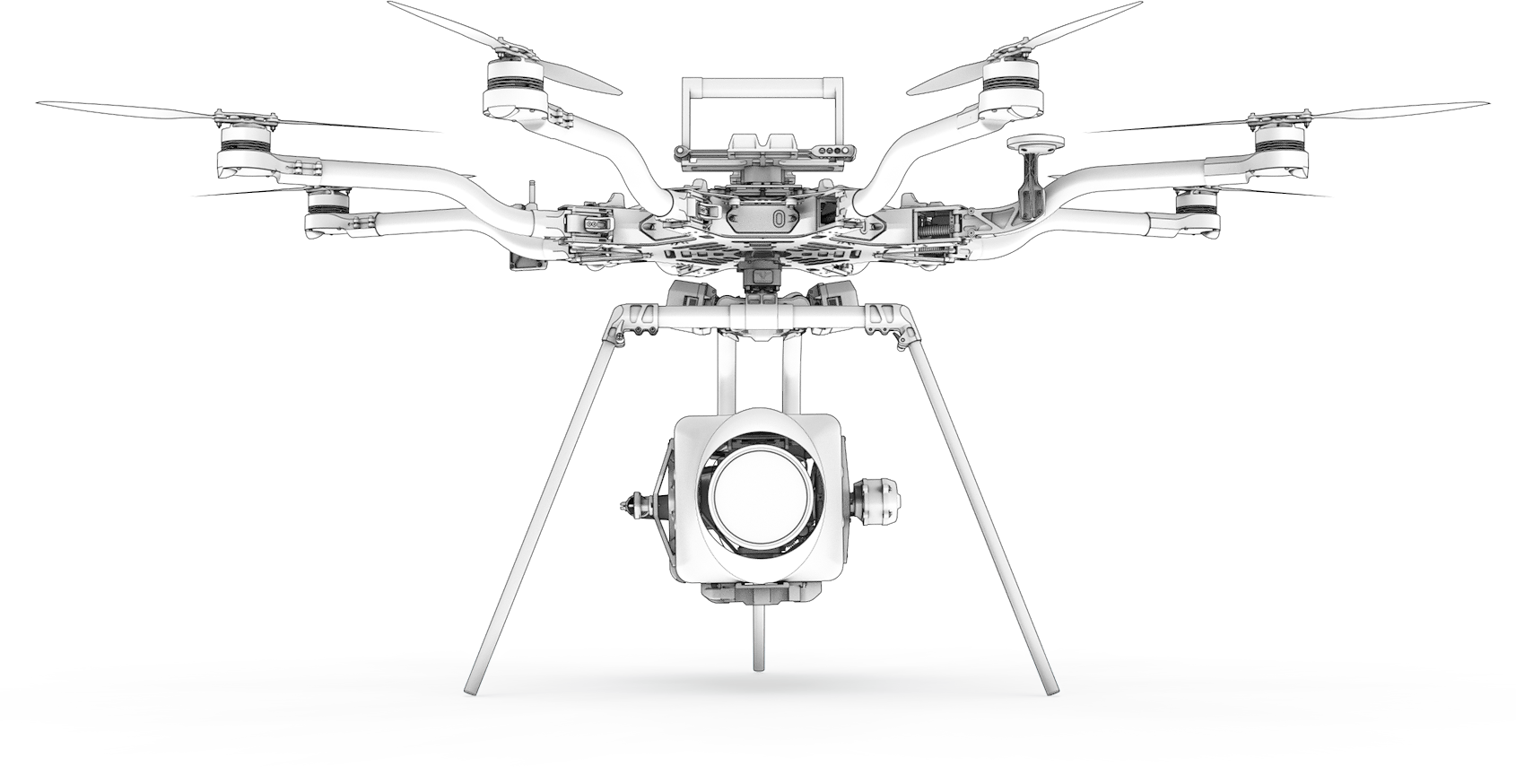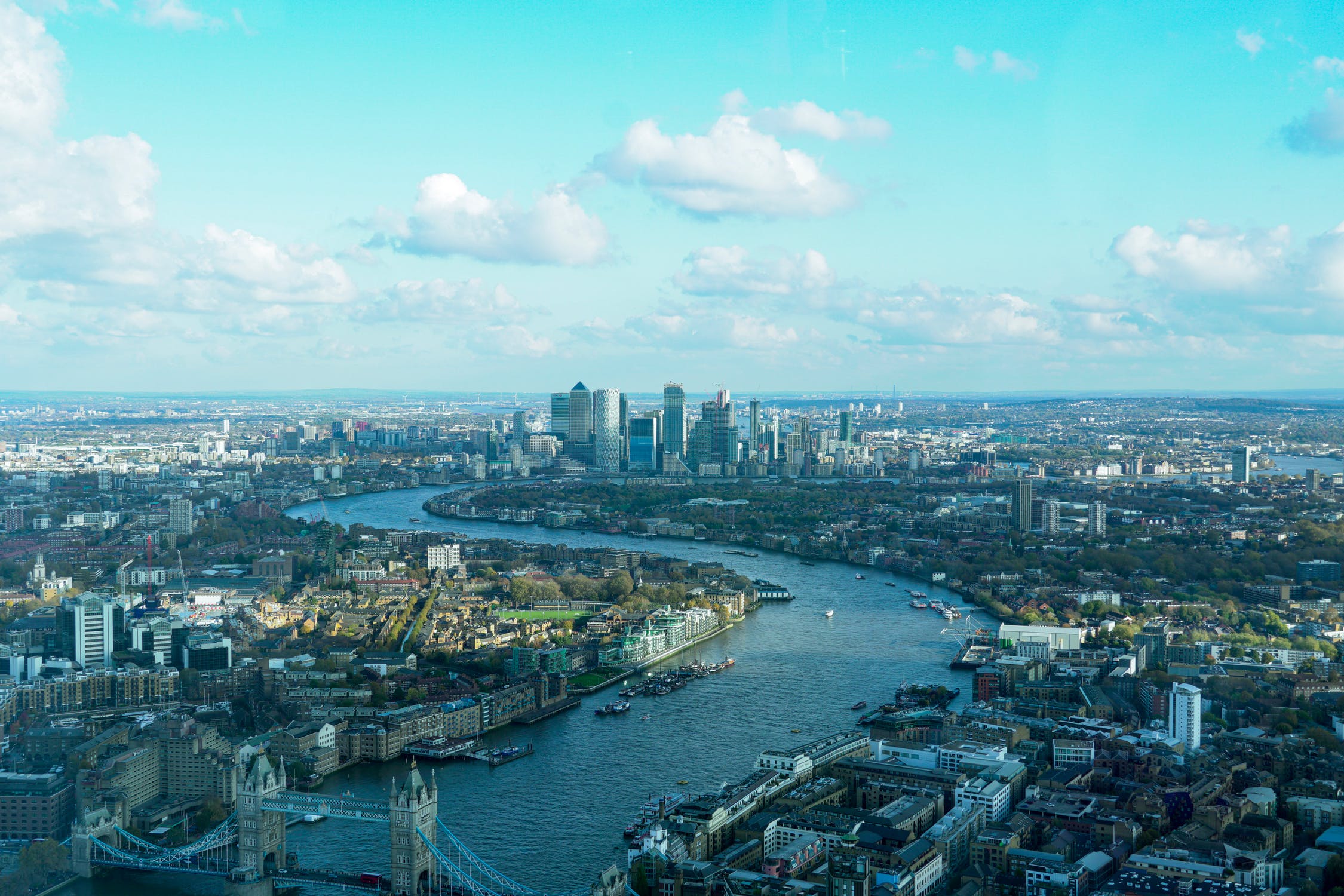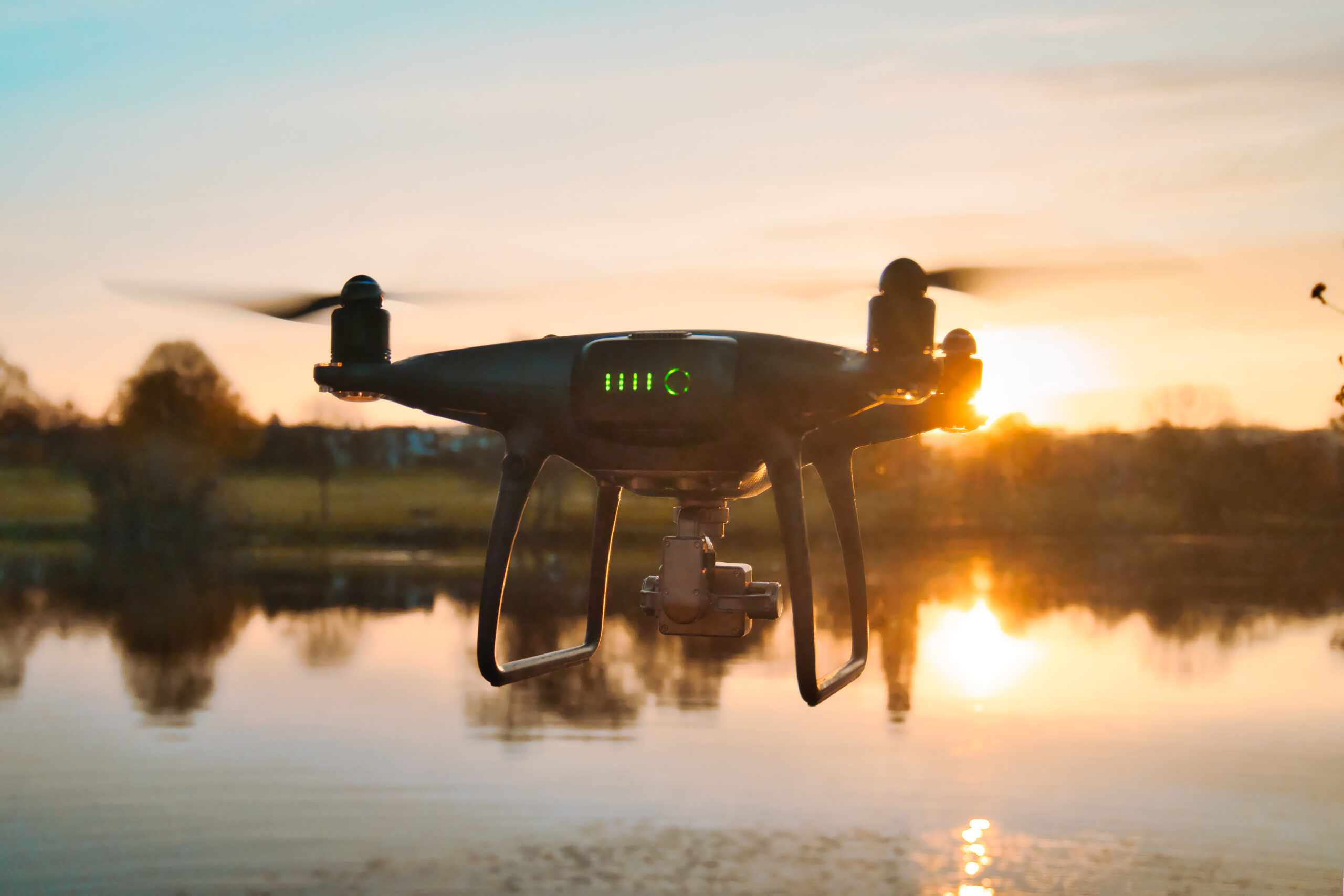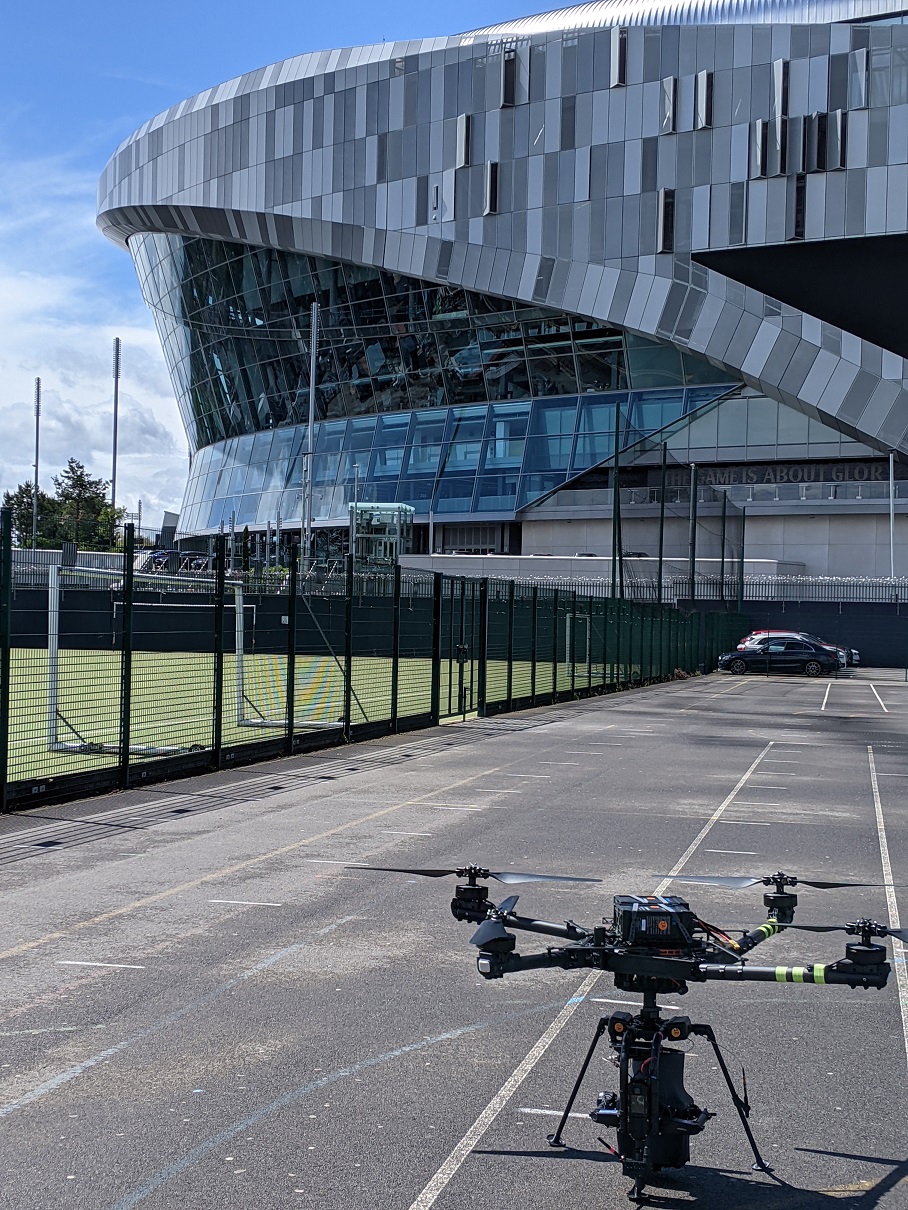Drones in Live TV Sports

Written by Lachlan. S from - BATCAM,
23 November 2021

RPAS in Live TV Sports
Overview of aerial photography?
“If you’ve watched a live football game on TV recently you may have seen one or two aerial shots of the ground and wondered how that shot was achieved, well in this short blog I hope to give you a little insight into how we at BATCAM use UAS in the live TV broadcast of various sporting events”.
Let’s dive right in.
TDR: RPAS in Live TV Sports
Why use UAS in live TV?
Aerial shots can provide TV viewers with a perspective that just wouldn’t be possible from a ground-based camera, giving them a feeling of the surroundings, atmosphere, and scale of an event, as well as anchoring the location to a local landmark for familiarity. Helicopters would traditionally be used in this roll, but due to their greater expense are typically out of financial reach of many sporting events.
However, both manned and unmanned aircraft have their own advantages and unique capabilities in providing aerial shots for live TV, and there have been more than a few occasions where both have been in use at the same (usually major) event.
Integration into broadcast
Whenever you attend a football, rugby or other sporting fixture that involves a live TV broadcast, you should find somewhere near the stadium (or sometimes hidden inside) an Outside Broadcast Compound, or “OB Compound” for short. This is where all the TV broadcast production equipment and crew are setup for the game. But due to the fact we need to operate an aircraft, our crew is usually located at some distance away from this compound, making our integration into the broadcast a little trickier. Here are some points to consider.
Reason 1: What’s your budget?
Low budget drones cost a fraction of the popular manufacturers such as DJI, Autel and Parrot however what can these reduced prices buy you? Too low and you will almost be certainly limited to the most basic camera and drone features, build and flight control.
Where does the camera feed from the drone go?
All cameras used on a broadcast need to send their picture to the main production truck in the compound, where each camera feed is used as desired during the broadcast.
For ground-based cameras this can be done with a cable, but for a flying aircraft we require a wireless link. Therefore, as well as the main UAS camera crew, another crew member is located within the compound during the broadcast who oversees the operation of RF equipment that will receive the camera feed from the UAS and then feed it on, into the production truck.
What frequencies are used to transmit?
Of course, for a professional live TV production we can’t use just any video transmission system, so our equipment is setup with custom high-end (and very expensive) video transmission equipment from companies such as BroadcastRF, transmitting on a dedicated licenced frequency (typically around 2GHz) which changes for each operation.
What is provided
While every broadcast is slightly different, the director of the live broadcast will generally decide before the game what shots they’re looking to utilise our unique capabilities for during the broadcast, and we then plan to deliver those shots.
Sometimes BATCAM may be given direction to obtain a specific shot during the broadcast, however typically we focus on providing aerial shots for the following moments.
- Start of the broadcast
- Build-up to the game
- Teams entering the field just before kick-off
- Half-time
- Full-time
- End of the broadcast
Enterprise Level drones such as the Freefly set-up are a great low cost option to get you into the Drone game and learn the basics. However while these are very accessible they are not designed to capture high quality images. If high quality images is your goal then a prosumer drone at the lower end would be the DJI Mavic series, or at the higher end -the Inspire 2 and the Matrice 300 with a powerful retrofitted camera such as the zenmuse H20.
- Mega pixels
- Sensor Size
- Zoom capabilities
- Photo Format (RAW)
Are Pilots asked to perform specific manouvers?
During a flight the camera operator will communicate with the remote pilot to direct their movements in order to achieve the shot they have in mind. Unfortunately for the remote pilot, the flight manoeuvres conducted are most often very simple movements. This is usually due to the confined area within which we must operate, but also the type of shot the director is looking for.
Currently, the resolution of the footage BATCAM provides is 1080p, but tests are underway with 4K capable video transmission equipment.
Specialist Camera Equipment
The key to the quality of the shots we provide is the Freefly Movi Carbon – a 5-axis stabilised gimbal with an integrated Panasonic GH5S camera fitted with a Fujinon XK 20-120mm lens. It is a tightly integrated and balanced piece of kit that enables extremely stable shots, even when at the very end of the zoom range. It is controlled from the ground by a dedicated camera operator, using the Freefly Movi Controller, and its movement is completely independent from the aircraft.
Specialist Unmanned Aircraft.
The aircraft that carries the Movi Carbon is another product from Freefly – the Alta X. It is a heavy-lift quadcopter that gets it power from two 16Ah 12S LiPo batteries which drive 33 inch carbon-fibre filled nylon propellers. Even when carrying the roughly 9kg Movi Carbon, the Alta X still has plenty of excess power, providing a comfortable safety margin if we unexpectedly encounter adverse weather in the air.
The brain of the aircraft is a Pixhawk Cube running Auterion PX4 firmware, with the remote pilot sending their commands to the aircraft via an 868MHz control link, which avoids the congested 2.4GHz spectrum for improved signal reliability. The pilot also has a display connected to their controller displaying aircraft parameters, to enable monitoring of critical systems such as battery voltage levels and GPS status.
If you ever see us flying, you’ll be looking at about 28kg and £100k worth of equipment hovering in the air
01
The challenge in the Plan
As with any UAS operation, a lot of planning is conducted in the weeks leading up to a broadcast to ensure the operation will be legal, safe, and actually feasible. Sorting out things such as landowner permission, airspace permissions, frequency licencing, crew availability and just trying to find a piece of open land near the broadcast venue are all challenges that need to be dealt with.


02
Arriving on Time
When the day of the broadcast arrives, our crew will typically arrive at the compound 4-5 hours before kick-off, starting with the set-up of the RF equipment at the compound end, before moving onto the flying site and setting up not just the aircraft and gimbal, but also the battery charging infrastructure needed to sustain the operation throughout the broadcast.
03
Set-up the Equipment
Once all the required equipment has been set-up and configured, a test flight will be conducted to ensure all equipment is working and that the production truck in the compound is receiving clear footage from aircraft.
If no problems are encountered, it’s then just a matter of launching and obtaining the required shots at the time they’re needed. However, this can be tricky if there happens to be a lot of shots required in a short space of time but limited batteries available – careful planning of battery usage is critical to the success of the operation.

CAREERS IN THIS INDUSTRY
There is, I’m afraid, no clear pathway to becoming part of a live UAS camera crew at BATCAM. But many crew members are freelancers, therefore if you have broad experience operating a range of UAS as well as a bit of TV knowledge (and the right connections of course) you might be able to find yourself working as a crew member when the time is right. Just be aware that while there are a few good moments such as operating on a sunny Japanese surf beach, many operations will have you standing out in a muddy field, in the dark, scraping ice off the Peli cases due to how cold it is!
So that’s a very brief overview of what is typically involved with a live TV UAS operation. Every location, broadcaster and director uses our capability slightly differently, but generally speaking, that is how live TV is made with a UAS.
F.A.Q.
Frequently Asked Questions
Are there other aircrafts in the air during flight, such as a helicopter that's part of the same event?
Absolutely. We safely share the airspace with everyone else through a combination of vertical separation, coordination with other operators, and technology such as ABS-B transceivers.
Has anything gone wrong before? Any serious challenges BATCAM have had to overcome?
While thankfully nothing major has gone wrong with the aircraft while airborne, there are always problems that come up now and then. Most common problems are probably with RF links – whether it’s interference on the main video feed, on the gimbal control link, or the telemetry link. However, these issues are usually just an annoying nuisance that would require us to land to troubleshoot. Perhaps one of the more surprising challenges is just maintaining a set of charged batteries ready for your next flight when the chargers (or the generators powering them) become affected by electrical gremlins and decide they want to take a break from charging.
Do BATCAM film other TV sports apart from stadium type sports?
Although BATCAM is involved in the broadcast of various sports, most events we’re involved with are based at a stadium or smaller sports ground. However there have been some rare exceptions such as golf tournaments, surfing at the Olympics, and rowing at the Paralympics.
Do BATCAM film other TV entertainment or is it just sports?
Yes, we do occasionally conduct non-live shoots; sometimes to accompany a live sports event but also various small pieces for a variety of TV shows.
how do TV broadcasters pick which Live Drone filming for Broadcast to use?
BATCAM’s capabilities are unmatched in the UK, and so when broadcasters are considering their options for a live aerial camera, BATCAM continues to be their choice.
Stay Up to Date With The Latest News & Updates
Keep up to date
Keep up to date with changes in the Drone space
Follow Us
Follow us on our platforms for the latest news in this space.

